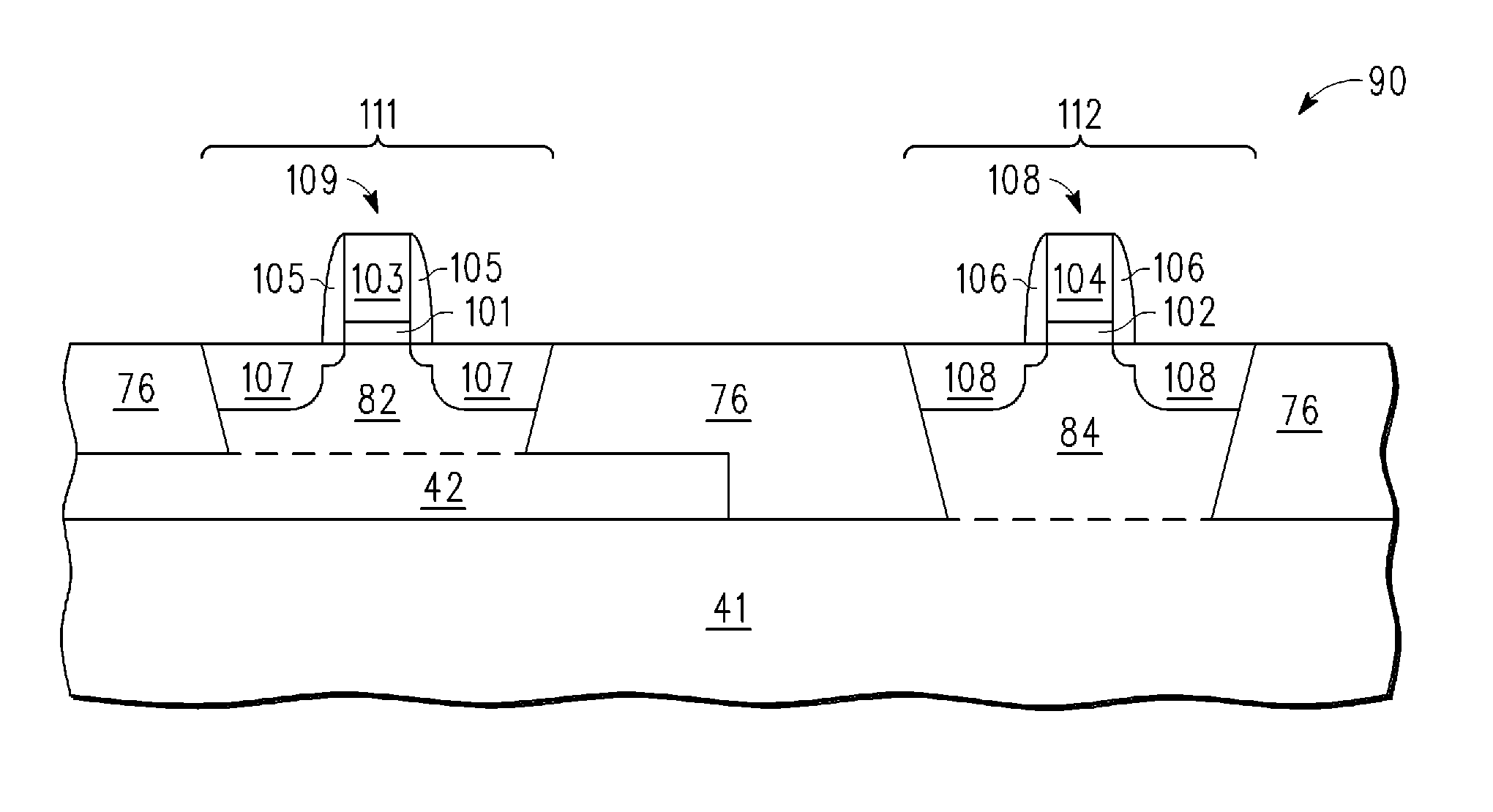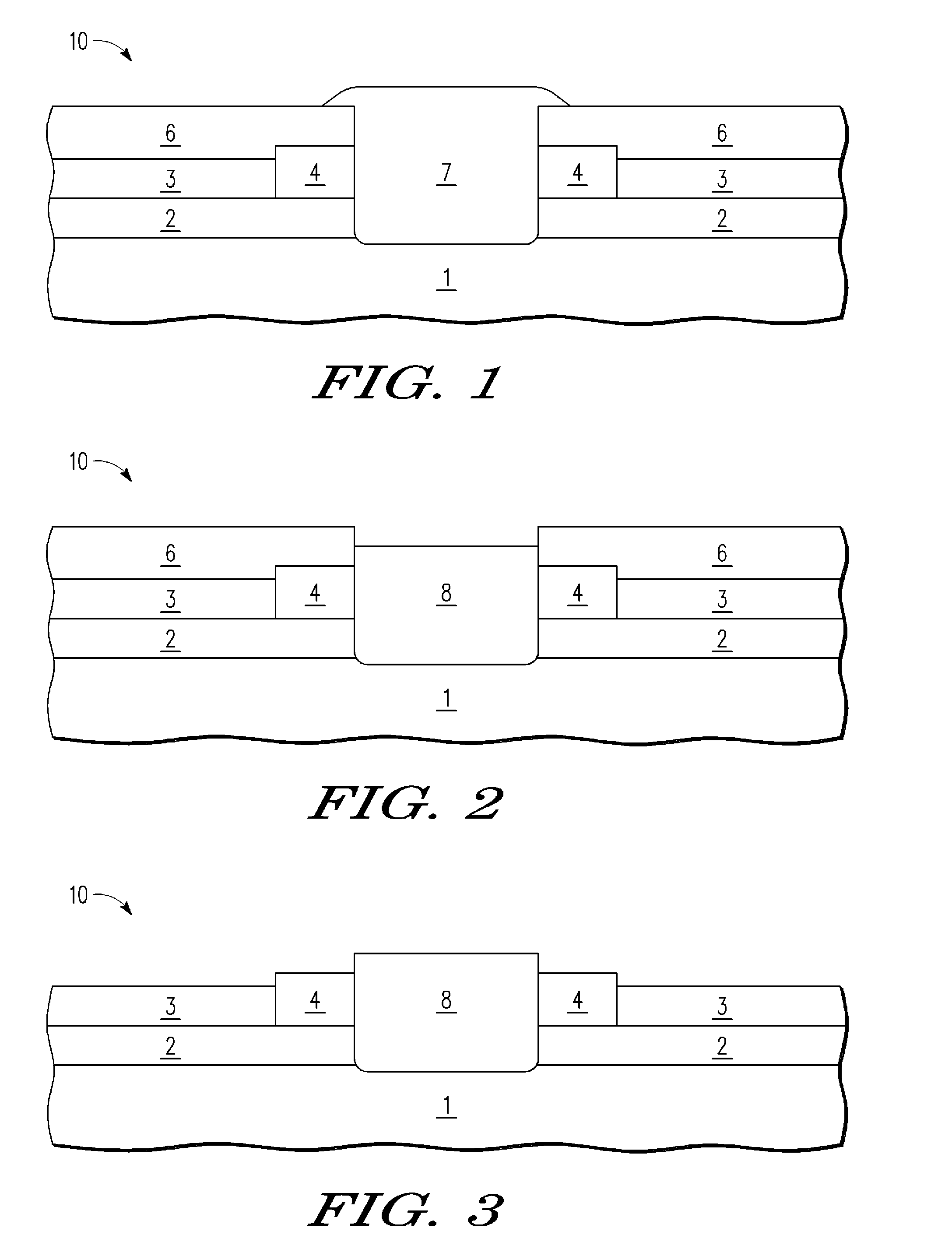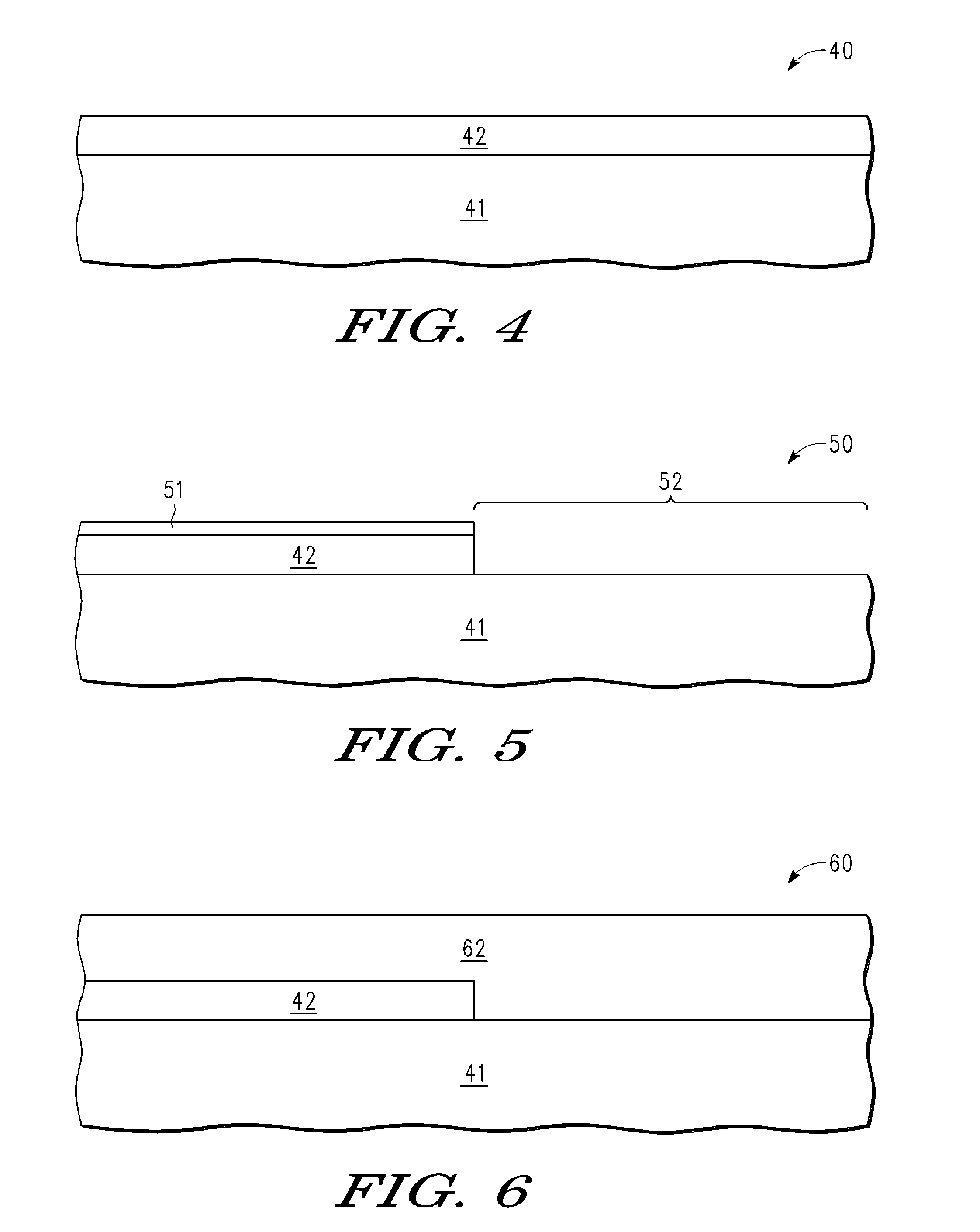Inverse slope isolation and dual surface orientation integration
a technology of slope isolation and orientation integration, applied in the field of field effect transistors, can solve the problems of non-uniform silicon step/recess height between the different crystal surfaces, affecting device performance, and adding significant cost and complexity to the device fabrication
- Summary
- Abstract
- Description
- Claims
- Application Information
AI Technical Summary
Benefits of technology
Problems solved by technology
Method used
Image
Examples
Embodiment Construction
[0017]A method and apparatus are described for fabricating high performance CMOS devices with hybrid or dual substrates by etching a deposited dielectric layer to form tapered isolation regions and expose underlying semiconductor layers in a bulk wafer structure prior to epitaxially growing the first and second substrates having different surface orientations. Using an inverse slope isolation approach to define openings in the deposited dielectric layer that expose the underlying semiconductor layers, dual surface orientation (DSO) substrates can be epitaxially grown at the same time in a cost effective way that results in improved device performance and improved planarity for the first and second substrate heights. By improving the planarization of the dual substrate surfaces, better photolithography control is obtained and dispersion in device parametrics and performance is reduced. In addition, improved planarity in the substrate heights reduces non-uniformity due to variations i...
PUM
 Login to View More
Login to View More Abstract
Description
Claims
Application Information
 Login to View More
Login to View More - R&D
- Intellectual Property
- Life Sciences
- Materials
- Tech Scout
- Unparalleled Data Quality
- Higher Quality Content
- 60% Fewer Hallucinations
Browse by: Latest US Patents, China's latest patents, Technical Efficacy Thesaurus, Application Domain, Technology Topic, Popular Technical Reports.
© 2025 PatSnap. All rights reserved.Legal|Privacy policy|Modern Slavery Act Transparency Statement|Sitemap|About US| Contact US: help@patsnap.com



